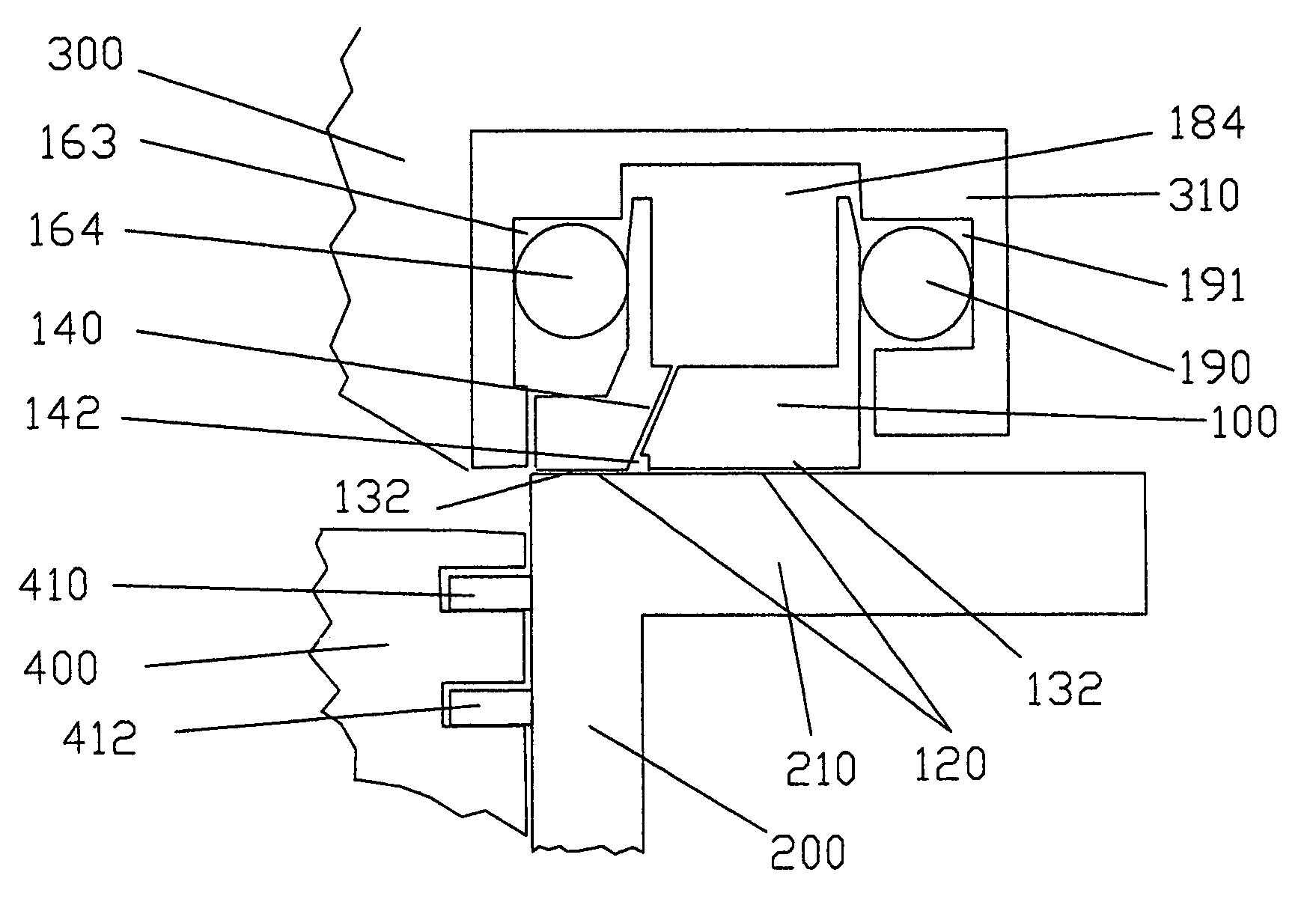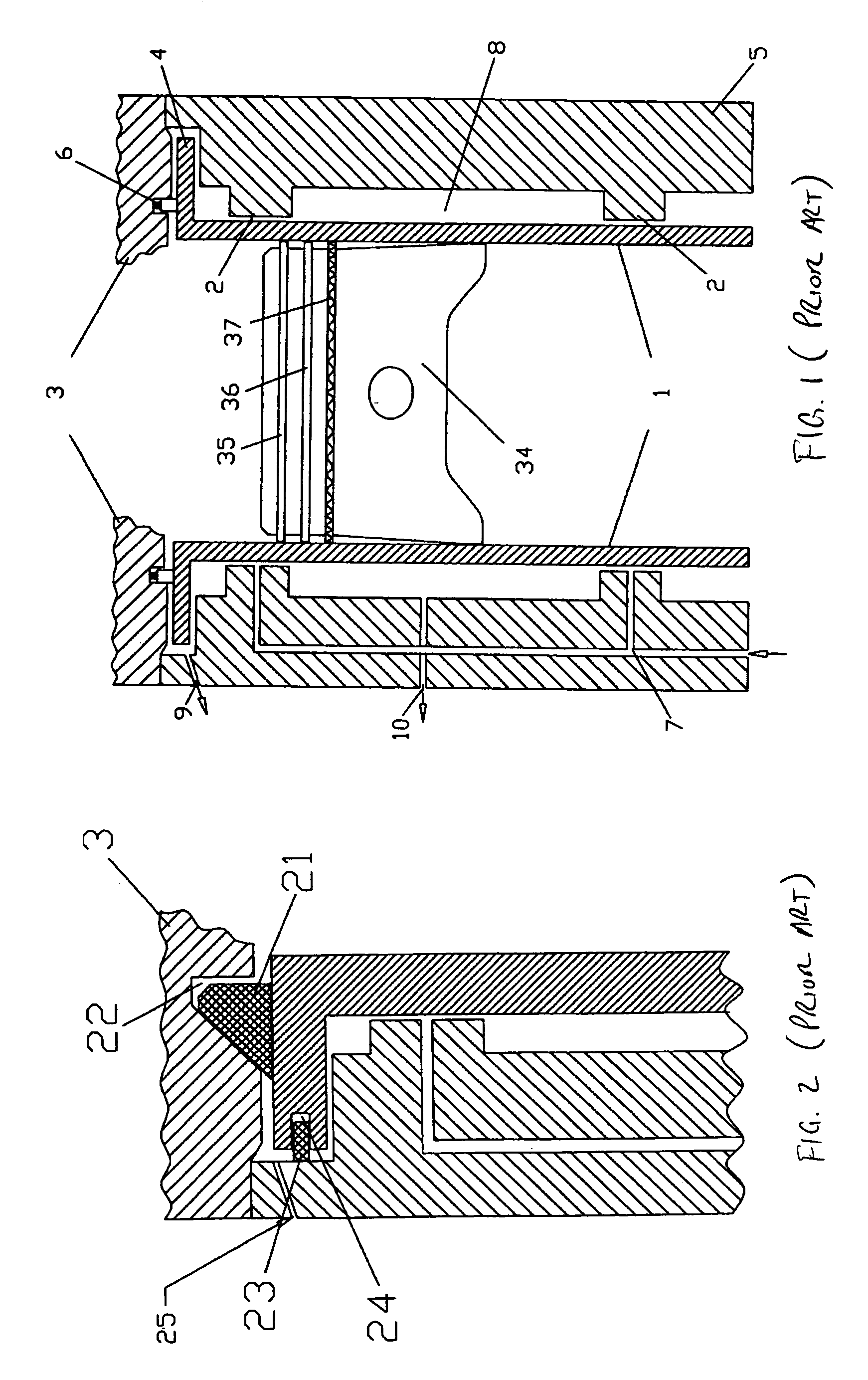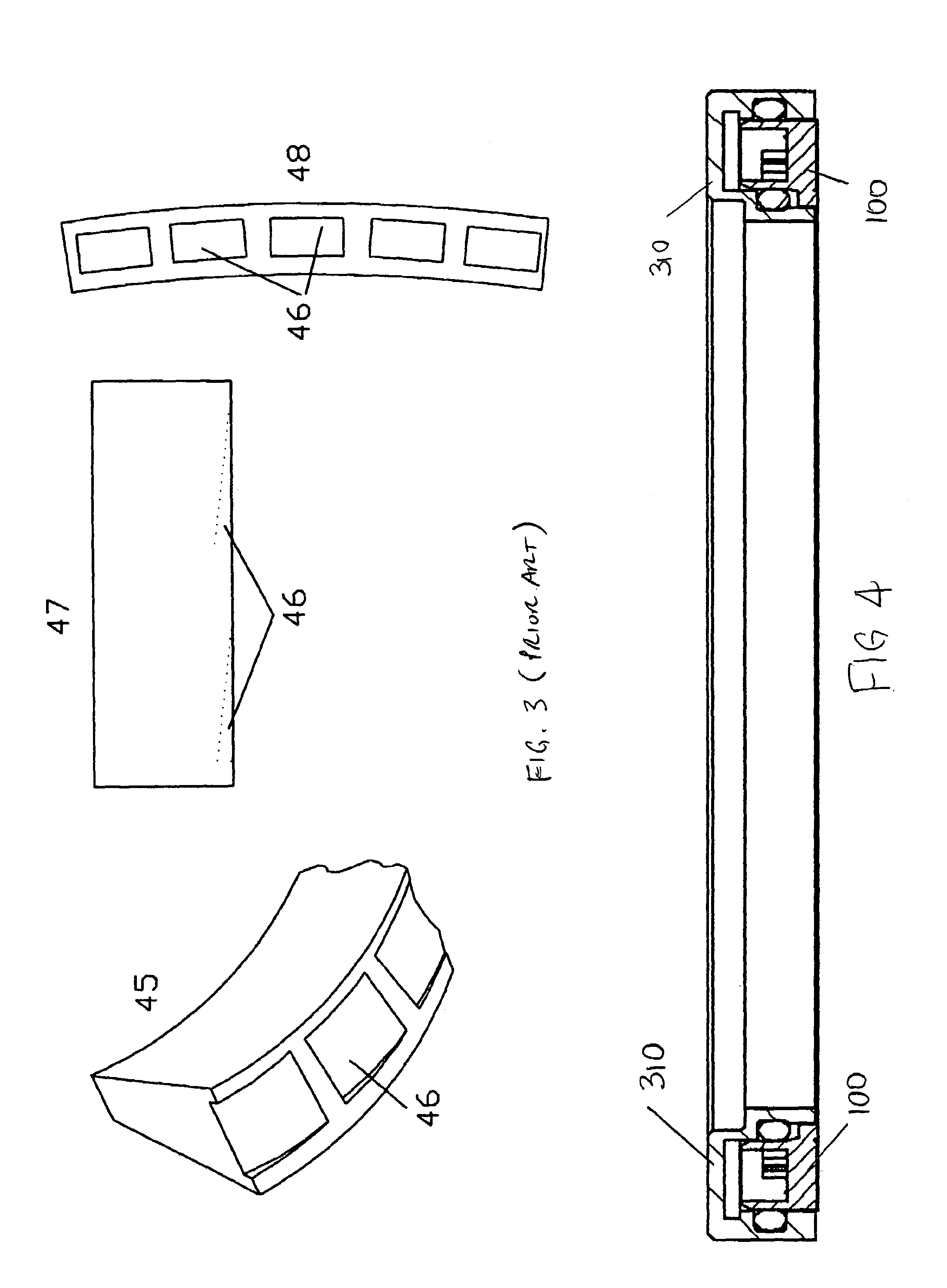Apparatus and method for rotating sleeve engine hydrodynamic seal
- Summary
- Abstract
- Description
- Claims
- Application Information
AI Technical Summary
Benefits of technology
Problems solved by technology
Method used
Image
Examples
Embodiment Construction
Hydrodynamic Face Seal
[0038]FIG. 4 is a side view of a hydrodynamic face seal 100 which is positioned within a head insert 310. Each cylinder in an RLE will typically have a rotating sleeve or liner, and a seal between the rotating liner and the cylinder head.
[0039]FIG. 5A shows the relative position of an example hydrodynamic face seal 100 sealing the interface of the rotating liner 200 and the cylinder head 300. A portion of a piston 400 and piston rings 410, 412 are shown for reference. In this example, the rotating liner includes a top flange 210. The bottom surface, or face, 120 of the face seal 100 provides a sealing zone 130 and a loading zone 132 between the seal 100 and the top flange 210. The face seal is typically positioned in a head insert 310 in the cylinder head 300. An oil supply cavity 184 is located in head insert above the face seal 100, and oil is provided from this oil supply cavity to the sealing zone and loading zone. Oil is provided from this oil supply cavit...
PUM
 Login to View More
Login to View More Abstract
Description
Claims
Application Information
 Login to View More
Login to View More - R&D
- Intellectual Property
- Life Sciences
- Materials
- Tech Scout
- Unparalleled Data Quality
- Higher Quality Content
- 60% Fewer Hallucinations
Browse by: Latest US Patents, China's latest patents, Technical Efficacy Thesaurus, Application Domain, Technology Topic, Popular Technical Reports.
© 2025 PatSnap. All rights reserved.Legal|Privacy policy|Modern Slavery Act Transparency Statement|Sitemap|About US| Contact US: help@patsnap.com



